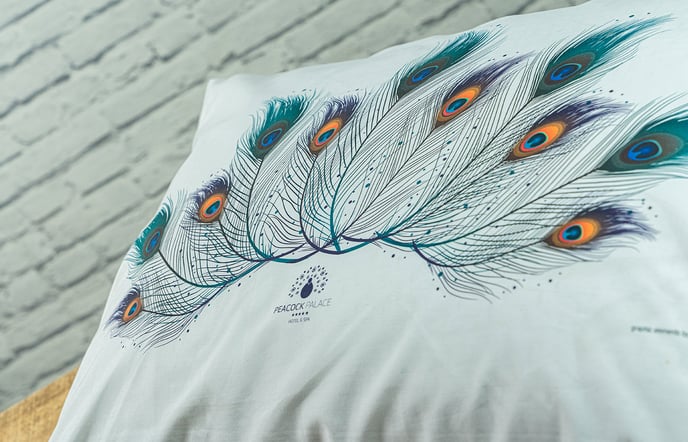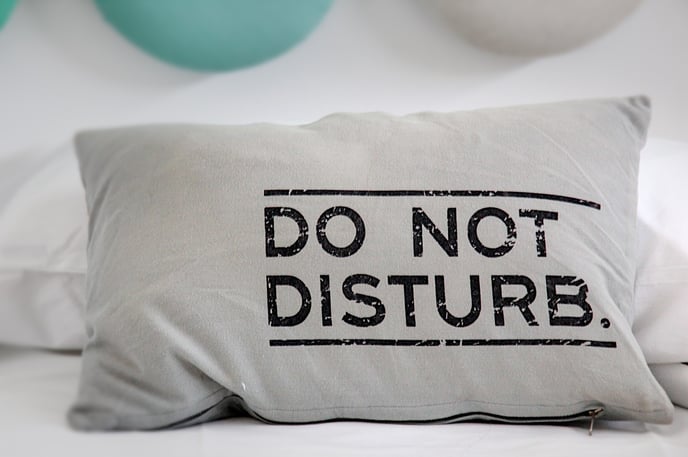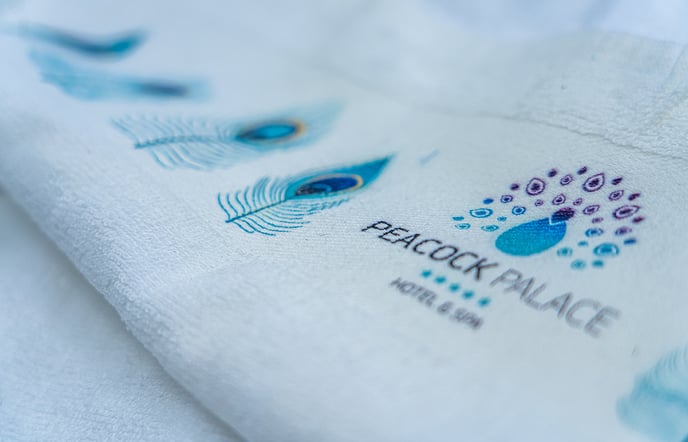A guide for printing directly on household fabrics with the use of TexJet series printers.
Digital textile printing is an advanced technique that can reproduce any complex design or pattern in a variety of colors even on home textiles. With dtg technology you can design and produce everyday household products such as kitchen and bath towels, bedlinen, pillowcases and other home decorations like canvas art, wallpaper and upholstery. Also, you can provide personalized and even custom-made orders like monogram initials or hotel logos.

The general process of printing on home textiles is described below, along with some special cases that require more attention.
Step 1
Mount the suitable platen on the printer, in accordance with the dimensions of the fabric and the design that you want to print.
Tip: Due to the fact that home textiles consists of large surfaced fabrics, the most suitable platen is the 40x60 cm (15.7"x23.6") platen.
Step 2
If the fabric is on the thicker side, prepare the platen’s surface with fabric glue, especially in the case that you are using a platen without a frame. By doing this, the fabric sticks to the surface and the chance of moving during printing is eliminated.
Step 3
Place the fabric on the platen or wear it, in the case that is already sewed (i.e. pillowcases). Make adjustments by pressing the fabric on the platen in order to keep the surface flattened.
Step 4
Select your desired design though the RIP software. Make sure that you choose the suitable template for your selected platen size.
Basic printing process with Digital Factory Apparel Polyprint Edition v10
Step 5
When printing is finished, remove the fabric carefully from the platen.
Step 6
Proceed to cure the print using a heat press or an oven dryer.
Pillowcases

The printing procedure on pillowcases can be achieved with two alternative options. First, is utilizing the fabric beforehand sewing. This way you can adjust the fabric easily and print according to your needs. For example, you can print on the garment, cure it and then stitch it in a way that the print appears even on the sewed areas. Second, is “wearing” the fabric in the printer’s platen and printing only in the surface available. This means that if you want to print on both sides of the pillowcase, you should print on one side first, cure it and then repeat the process on the other side.
Towels

Depending on the type of towel that you choose to print upon, the printability of each area may differ. For example, if you choose to print a design on a bath towel, which usually consists of a banner (more densely weaved area) and a fuzzier area, we recommend avoiding the floccose area due to the spare weaving, as the ink will sink in deeply into the fibers and will not be as visible.
Note: If you wish to print on a towel’s fuzzier area, we recommend double-printing the design in order for the outcome to be more vibrant and increase coverage. To keep the surface flat and to ensure that the printhead remains undamaged because of the textile’s thickness, make sure you have applied fabric glue to the platen prior to placing the towel.
Home decoration
When you are about to use textile for decoration purposes, such as canvas art, wallpapers and upholstery there is no need to cure the fabrics, as they are not going to be washed. All you have to do is let them airdry for a couple of minutes and then they are ready for use.
Sackcloth

Burlap, also known as sackcloth, is a coarse canvas woven from jute, hemp, or a similar fiber and is normally used for making sacks. It became quite a popular textile option in home decoration and dtg printing is a process that can be used in order to transform this material into a fashionable household product. Because burlap is very rough and fibrous, all you need to take care when printing on it, is making sure that the surface is as flat as it gets and that the proper distance from the printhead is achieved.
-1.png?height=120&name=Polyprint%20Logo%20(Dark)-1.png)